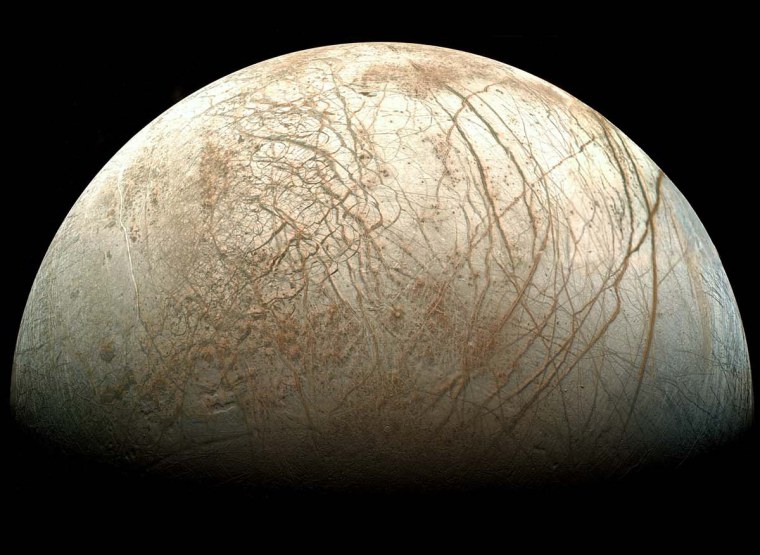New research shows that the jumbled ice blocks crowning the surface of Jupiter's icy moon Europa are signs of large liquid lakes below, a key finding in the search for places where life might exist beyond Earth.
Drawing from studies of underground volcanoes in Iceland and Antarctica, scientists ran computer models to see if the chaotic formations on Europa's surface could be explained by the same geologic processes seen on Earth.
"We looked at melt underneath the ice, and the fracture and collapse of ice shelves," Britney Schmidt, a postdoctoral fellow at the University of Texas at Austin's Institute for Geophysics, told Discovery News.
"We come with these large pockets of water that form lakes. As they melt, they actually break up the ice above it, like what you see on Earth," she said.
SCIENCE CHANNEL: Take a tour of Titan, Callisto and Europa!
The study provides "the best model so far" for the ice formations on Europa, Paul Schenk, a staff scientist with the Lunar and Planetary Institute in Houston, wrote in an email to Discovery News.
"If we go back with penetrating radar instruments we should be able to see into the ice shell, determine the stratigraphy of the layers in the shell and verify which model works best," Schenk said.
Europa, which is slightly smaller than Earth's moon, is believed to have a large ocean of salty water beneath its frozen crust.
"Europa has more water than all of Earth's oceans," planetary scientist Simon Kattenhorn, with the University of Idaho, told Discovery News.
While the ocean itself is of interest to scientists searching for life beyond Earth, a mechanism to churn the surface ice and subsurface water makes Europa an even more compelling target.
NEWS: Europa, Jupiter's Moon, Could Support Complex Life
The vigorous mixing of ice and water provides one mechanism for nutrients and energy to get from the frozen surface to the ocean below.
"It's exciting for biology," Schmidt said.
A mission to Europa is second on planetary scientists' wish list after a sample return mission from Mars.
"Europa is likely to have a deep ocean of liquid water beneath its icy crust, making it an object of enormous interest as a possible abode for life," planetary scientist Steve Squyres, with Cornell University, testified at a Congressional hearing this week.
ANALYSIS: Jupiter's Moon Europa Helps Solve Stripey Mystery
Schmidt's research will be published in a future issue of Nature and appears on the publication's website Wednesday.
The headline on an earlier version of this story incorrectly referred to Europa as a Saturn moon rather than a moon of Jupiter.
